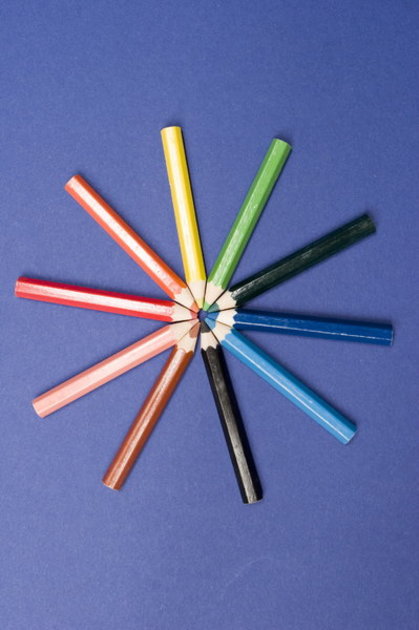
Remember back when you were dating? You spent a lot of pleasant time wining and dining out, although the “wining” part consisted of diet cola.
Then you got married and the wining and dining continued but the setting shifted to your home.
In the next stage, when your baby began to feed herself, wining and dining was suspended and replaced with you trying to eat while repeatedly refilling your baby’s fork or spoon, or just putting the food down in front of her to pick up with her fingers. By the end of the meal, she looked like she was on the losing end of a food fight.
Then, for many years, wining and dining morphs into whining and dining and the term “food fight” takes on an entirely different meaning. Now it means fighting over food.
There are a few points to consider when it comes to the fight with your child over food at mealtime.
Which foods do you expect your child to eat?
How much of a food that your child really wants to eat do you let him eat?
How much do you allow your child to take onto her plate?
We’ll tackle these in a moment, but first, allow me to reminisce.
When I was a child in the 50s there was common expression that parents said to children who left food on their plates: How can you waste that food? There are children starving in China!
Inexplicably, that somehow guilt tripped some kids into finishing their food. What was the logic? How could any child ever fall for that, I’ve wondered.
Recently, I thought I had finally figured it out. I thought it had to do with the so-called Butterfly Effect.
The Butterfly Effect is the idea that the flap of a butterfly's wings in Brazil can trigger a tornado in Texas.
Maybe parents back then thought that finishing the food on a plate in the Bronx could alleviate the famine in China, or they wanted their kids to think so.
Alas, my theory was disproven when I discovered that the Butterfly Effect was first proposed in a lecture given by meteorologist Edward N. Lorenz: Predictability: Does the Flap of a Butterfly's Wings in Brazil Set a Tornado in Texas? This took place at the 139th meeting of the American Association for the Advancement of Science
on December 29, 1972, many years after I had stopped finishing my food on behalf of Chinese children. Thus, it remains inexplicable.
So instead, let’s explicate the phenomenon of whining and dining and how to avoid it. You will increase and decrease it based on how you answer the following questions:
Which foods do you expect your child to eat?
There are foods that some children intensely dislike. There are foods that some adults intensely dislike. President George H. W. Bush famously didn’t like broccoli and refused to eat it.
President Bush declared today that he never, ever, wants to see another sprig of broccoli on his plate, whether he is on Air Force One or at the White House or anywhere else in the land.
''I do not like broccoli,'' the President said, responding to queries about a broccoli ban he has imposed aboard Air Force One, first reported this week in U.S. News and World Report. ''And I haven't liked it since I was a little kid and my mother made me eat it. And I'm President of the United States, and I'm not going to eat any more broccoli!'' (New York Times, March 23, 1990, Section A, Page 14)
So much for the idea that if you make your child eat something he doesn’t like he’ll come to like it.
Besides, there are other ways to provide the nutrients missed from refused foods.
For example, your child might enjoy some vegetables raw rather than cooked, especially when served with ketchup, mustard, salsa, or some other dip. According to a study in the Journal of Agricultural and Food Chemistry, some vegetables, including broccoli, are healthier raw rather than cooked. (Scientific American, March 31, 2009)
Speaking of nutrients, how often do your child’s food selections have to add up to a balanced diet? Every meal? Every day? Every week? I would suggest that you ask your child’s pediatrician. You may be able to reduce the whining.
How much of a food that your child really wants to eat do you let him eat?
Sometimes whining results from the opposite situation: she wants to eat more and you don’t want her to eat that much of it. Childhood obesity is a concern for your child if your child’s pediatrician is concerned. If the doctor isn’t concerned, talk with him or her about your concerns.
If you don’t want your child to eat something because of the timing, e.g. the next meal is coming soon, it’s too close to bed time/school bus time, ask him where you could put that item for safe keeping until you would allow him to have it.
Which brings us to the next question:
How much to you allow your child to take onto her plate?
Did you ever wonder why children insist on taking huge quantities of some foods onto their plates? Did you ever say, “Take some now and when you’ve finished it, you can take more?” Why do children reject that seemingly reasonable suggestion? No, it is not because children are always unreasonable (they are sometimes; so are adults). It is because they’ve learned that often, by the time they manage to finish their first portion and ask for more, there is no more because their siblings or some other people at the table ate it!
What would you think of giving your child a second (small) plate for the “seconds” she wants so that if she decides not to eat it after all it doesn’t get thrown out because it wasn’t on her regular plate? This way no one will eat it before her but if she chooses not to eat it, it becomes available to everyone else.
When it comes to mealtime, parenting takes forethought and forbearance. And, as always, the nachas is worth it.
Rabbi Ackerman is the author of Confident Parents, Competent Children, in Four Seconds at a Time
Available at bookstores and on Amazon.
He can be reached at 718-344-6575

 Previous
Previous

